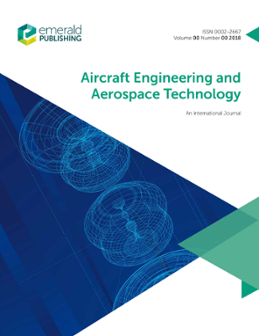Aircraft Engineering and Aerospace Technology: Volume 3 Issue 6
Strapline:
An International JournalTable of contents
A Sane Airship Policy: Properly Co‐ordinated Programme of Research Needed
THE British Government have decided on a policy in regard to airships which is described by the Prime Minister as “the maintenance of a scientific experimental interest in airship…
Light Aeroplane Production: A Critical Description of the De Havilland Works and Moth Construction
G.H. HandasydeTHE production of aircraft at the present time is a difficult and delicate business, not that the actual production of a machine is either difficult or delicate, provided there is…
Superchargers and Supercharging: A Summary of the Data Obtained During an Important Series of Experiments Carried out by the N.A.C.A.
Oscar W. ScheySUPERCHARGING is the increasing of the weight of charge delivered to an engine in excess of that normally inducted at the prevailing atmospheric pressures and temperatures. It can…
Aeroplane Braking Systems: A Comprehensive Survey of the Problem of Fitting Wheel Brakes and Types at Present in Use
R. Waring‐BrownTHE provision of brakes on aircraft is a problem that is at the moment exercising the minds of most aircraft designers and constructors. While in the past brake specialists and…
Seamless Steel Tubes for Aircraft: A Description of the Manufacturing Processes Employed with a Discussion on Materials and their Qualities
Austyn ReynoldsALTHOUGH the primary object of this article is to describe processes and plant used in the manufacture of cold drawn seamless steel tubing, it cannot be considered complete…
Windmills for Aircraft Generators: The Manufacture and Wind‐Tunnel Testing of a Centrifugally Operated Variable‐Pitch Type
THE usual method of driving aero‐generators is by means of a small windmill mounted on the shaft of the generator, the contour of the latter being streamlined. By this means a…
Municipal Aerodromes in England: Information Regarding Existing Facilities and Possibilities of Suitable Sites for Factories
THE Municipal Aerodrome movement in England is beginning to take shape, and there is no doubt progress in this development is becoming increasingly rapid. The Civil Aviation…
A New Turn Indicator: A Gyroscopic Instrument with an Ingenious Mounting and Fluid‐Friction Drive of General Application
A NEW aircraft instrument has been produced by Mr. Pollock Brown which, it is claimed, combines the functions of turn indicator and fore‐and‐aft level. The details of the “P.B…
An American Wind‐Tunnel: A Description, with a Historical Introduction of the 8‐ft. Tunnel at the University of Michigan
R.J. FairbanksAT the suggestion of Herbert Charles Sadler, now Dean of the Engineering College of the University of Michigan, Professor Felix W. Pawlowski was invited in 1913 to join the…
Research Work in England: A Guide to the Work Carried out by the Aeronautical Research Committee
Aeroplanes PERFORMANCE OF—GENERAL 1112. On the influence of supercharging on the performance of aeroplanes. (9d).
Research Reports and Memoranda
Under this heading are published regularly abstracts of all Reports and Memoranda of the Aeronautical Research Committee, Reports and Technical Notes of the U.S. National Advisory…
Month in the Patent Office: A Selection of the More Important Aircraft and Engine Specifications Published Recently
Aircraft wings having a framework comprising longitudinal spars and transverse ribs have stringers connected to the ribs in the direction of the span so that their outer surface…
Recent Technical Developments: A New Series of Engines—“Zontrol” Furnaces—Airway Beacons—Mineral Oil Test—Flexible Bearings
Bristol Mercury Engines The Bristol Aircraft Company announce the putting into production of their new series of “Mercury” engines. Although the new engines are of the same…

ISSN:
0002-2667Online date, start – end:
1929Copyright Holder:
Emerald Publishing LimitedOpen Access:
hybridEditor:
- Prof Phil Webb